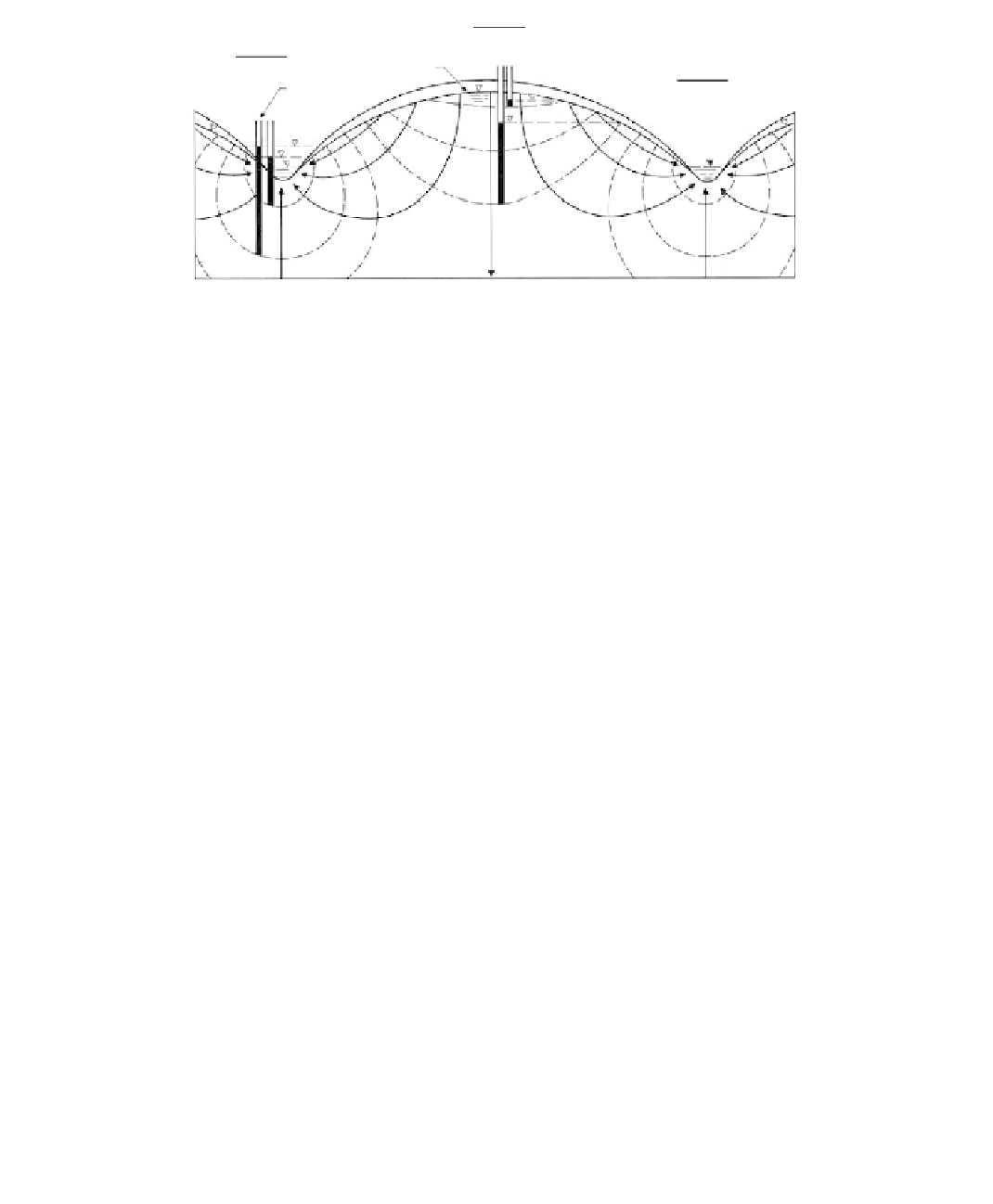Environmental Engineering Reference
In-Depth Information
Upland
Recharge area
Valley
CD
Discharge area
GWT
Valley
Piezometers
1
A
B
2
3
7
6
5
4
GWT = groundwater table
FIGURE 8.29
Simplified regional flow system in uniformly permeable materials. (After Hubbert, M. K.,
J. Geol.,
48, 785-944,
1940. From Patton, F.D. and Hendron Jr., A.J.,
Proceedings of the 2nd International Congress,
1974.)
permeabilities are present the differences between the actual and the hydrostatic distribu-
tion will be accentuated.
Slope Seepage
Flow systems within the slope and adjacent to its face are important to the consideration
of slope-stability problems. Slope seepage is often shown in the geotechnical literature
with the flow lines parallel to the water table (Figure 8.30a). This case actually exists nor-
mally only during other than wet periods. During the wet season when failures are likely,
conditions are those illustrated in
Figure 8.30b.
There is a downward pore-pressure gradi-
ent in the upper portion of the slope, and an upward gradient in the lower portions. It is
the upward gradient that results in instability during heavy rains.
The major difference between the two conditions given in Figure 8.30 lies in the effect
on the discharge area. In the case of parallel flow (a) there would be no adverse effects to
placing an impervious fill at the slope toe, since the flow would not be impeded. In the
case of (b), however, there would be a buildup of pore pressures at the toe and within the
slope, possibly leading to failure. Deposits of colluvium, resulting from natural slope fail-
ures, also block the discharge area and consequently are usually unstable.
Rock Masses
Variations in equipotential distributions for different permeability configurations are sig-
nificant in rock masses, particuarly where the flow is along bedding planes that dip par-
allel to the slope.
Flow to Wells
General
A water well is a vertical excavation constructed for the purpose of extracting groundwa-
ter for water supply, or for the purpose of dewatering or controlling water during con-
struction or other operations. Water supply wells are discussed in detail by Driscoll (1986).
There are two general cases of flow to wells:
1.
Single wells, or a pattern of wells, affecting a zone that is essentially circular or
elliptical in area

